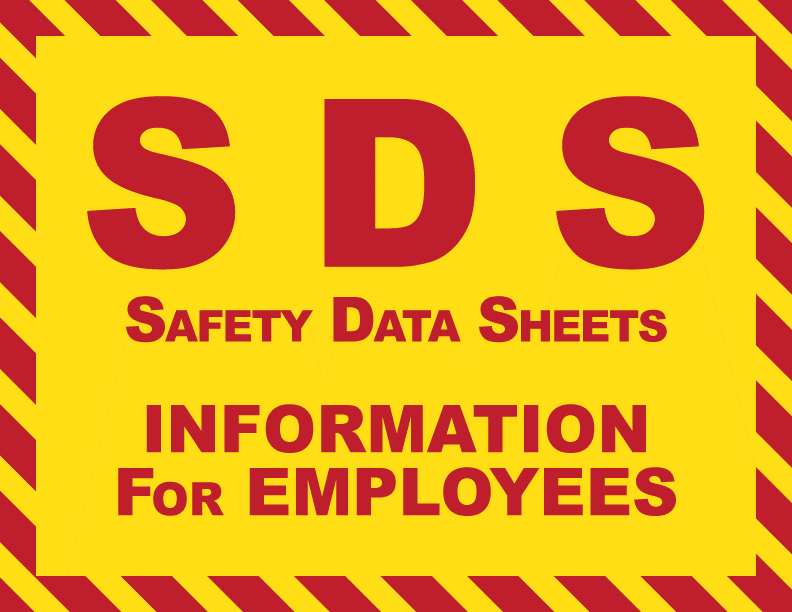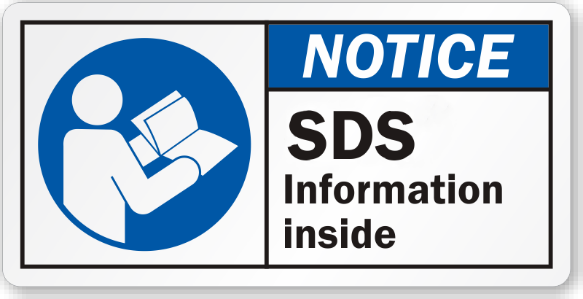
Maintaining and keeping up to date Safety Data Sheets (SDSs) readily available at your facility, corresponding to hazardous substances used or present, is not only a regulatory requirement and needed for filing many reports and permits, but is also a necessary measure for keeping your facility’s employees safe. With summer quickly coming to a close, and end of year report filing getting closer, now is a good time to consider getting your records, such as SDSs, in order.
Updating your SDSs would keep your employees safe and prevent potential regulatory fines and violations. See below for what you need to know about SDS requirements.
Employer Requirements
If a facility contains hazardous chemicals, it must have SDSs for those hazardous chemicals readily accessible to all employees. Accessibility can be in the form of a binder containing organized paper hard copies of SDSs or computer with electronic copies of SDS files. The SDSs must be located within the confines of the work place at all times, and employers must make sure that there is a backup way of accessing SDSs immediately available in case the main way becomes inaccessible (such as in the event of a power failure if using a computer file system).
When did updated SDSs become a requirement?
The Occupational Health and Safety (OSHA) Hazard Communication Standard (HCS or HAZCOM) (29 CFR 1910.1200(g)) was last updated to require standardized SDSs in 2012. At that time, the HCS was revised to require chemical manufacturers, distributors, or importers to provide SDSs to all their clients to communicate information on hazards. Although this HAZCOM Standard was passed eight years ago, Walden is still encountering facilities that are using Material Safety Data Sheets (MSDSs) and/or outdated SDSs. Manufacturers, importers, suppliers or employers are responsible for revising the accuracy of SDSs according to actual circumstances and updating them as needed. Please note that SDSs should be reviewed at least every 3 years and records of their updates should be kept for 3 years.

What should an updated SDS look like?
Up to date SDSs should follow a standard 16-part format. Although the SDS, and its predecessor, the MSDS, often contain most of the same information, the newer SDS is organized in a standard 16 section format for consistency and inclusion of all necessary information as follows:
- Section 1: Identification
- Section 2: Hazard(s) Identification
- Section 3: Composition/Information on Ingredients
- Section 4: First-Aid Measures
- Section 5: Fire-Fighting Measures
- Section 6: Accidental Release Measures
- Section 7: Handling and Storage
- Section 8: Exposure Controls/Personal Protection
- Section 9: Physical and Chemical Properties
- Section 10: Stability and Reactivity
- Section 11: Toxicological Information
- Section 12: Ecological Information (non-mandatory)
- Section 13: Disposal Considerations (non-mandatory)
- Section 14: Transport Information
- Section 15: Regulatory Information (non-mandatory)
- Section 16: Other Information
SDS Standardization to Find Information Faster
The standard SDS format allows workers who handle hazardous chemicals not only to comprehend the content of the SDS, but to be able to easily locate specific information. The latter is especially needed in emergency response situations, such as firefighting, where it is important to be able access to information quickly. Documents such as annual Right-to-Know filings, if required for your facility may include the submittal of up to date SDSs to the local fire department. Having up to date SDSs will also save you headaches in assessing whether you have updated information when it is time to file permits and annual reports.
Need Help?
Current SDSs are needed for different types of environmental reports and permits, such as annual Right-to-Know Tier II reports, Health and Safety Plans (HASPs), and Solid Waste Management Facility Permits, which you may need to file with various regulatory agencies. If you have hazardous chemicals at your facility and have questions regarding environmental compliance, please give Walden Environmental Engineering a call at (516) 624-7200. We would be more than happy to assist you with any of your concerns!
